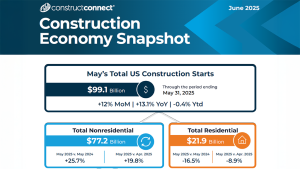Though the province continues to make strides in its attempt to encourage more projects to use recycled aggregates, there are still some smaller municipalities that remain adamant on using primary materials.
“There are still municipalities, that in their bids, are saying ‘100 per cent primary product must be used,’” said MPP for Dufferin-Caledon Sylvia Jones, a panel participant during a discussion at the Ontario Sewer and Watermain Construction Association’s annual conference in Toronto. “There isn’t a scientific argument that you could use effectively to support that argument.”
Jones is the brainchild behind Bill 56, a private members’ bill that would tear down barriers preventing recycled aggregate to be used in public sector projects.
She says the bill aims to develop more awareness of recycled aggregate and how its quality won’t be degraded once it is reused. Aside from that, she would like to leave the rest of the decision making up to the industry.
“It’s not going to put a percentage on how much recycled product should be used,” she said. “Quite frankly, I think that’s a market-driven decision. I think you as producers understand what you’re building, how you’re building it and how much can be used depending on the project”
According to the Ministry of Environment, the number of projects using recycled materials continues to grow in the province, including most of the 400 series highways.
Though, the number of public projects using recycled materials is increasing, she says it’s important the bill passes in order to get all municipalities on board. She’s concerned of potential conflicts in the event a project spans between multiple cities.
“What we need to do is make sure that some of our smaller municipalities that don’t have the engineering expertise…could tap into those standards and access the testing procedures,” she said.
Moreen Miller, CEO of the Ontario Stone, Sand & Gravel Association, believes Bill 56 will be a helpful tool, but insists that some of the responsibility should be placed on the industry to shift the culture on how it looks at recycled aggregate.
“Both recycled and primary aggregated meet the same specifications” she said. “We’re covered with so many pieces of legislation…so we need to be very careful as aggregate producers as we move forward in this uncertain time.”
The panelists also discussed the issue of fill management on sites, particularly the removal of excess soil which find new homes on sites located in smaller municipalities.
A large problem that one panelist was closely familiar with was that some of the excess soil dumped onto fill sites would end up contaminated.
This was true in 2011, where the Oak Ridges Moraine, located in the Township of Scugog, Ont., was turned into a soil dump site by Earthworx Industries. It was later found that some of the soil had contained toxic chemicals and had been dumped over drinking water aquifiers.
The operation was later shut down by the court, thanks to community groups who took action against it.
“A few municipalities have listened to their citizens and strengthened their bylaws by asking for things such as soil testing and by treating large-scale fill operations as the industrial activities that they are,” said Carmella Marshall of the Lakeridge Citizens for Clean Water (LCCW) group, which played a significant role in shutting down the fill site at Oak Ridges Moraine.
Marshall says there needs to be more regulations that require soil transported off site to be tested for contamination. “This issue would be a lot easier if the contaminated soil was colour coated,” she said.
Though, municipalities have a role to play in overseeing the issue, Miller says some of the responsibility needs to be put on the contractors and the receiving to make sure the material is clean.
“We don’t want to have one set of rules in one municipality, and a different set in another.”
Past OSWCA president Rob Robinson says the soaring cost to do business has factored into some of the decisions contractors make on excess oil and recycled materials.
“Take yourself back 20 years…excavation prices were six to nine dollars per cubic metre…disposal sites were not a concern with multiple locations,” he said. “Today, tipping charges are more than the total cost of the excavation 20 years ago.”










Recent Comments
comments for this post are closed